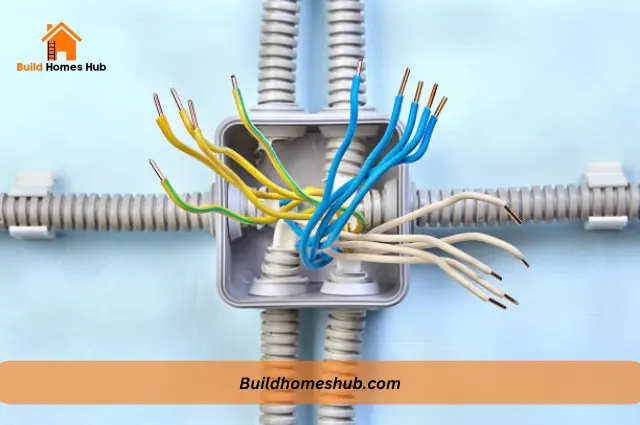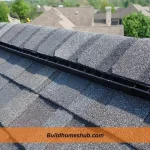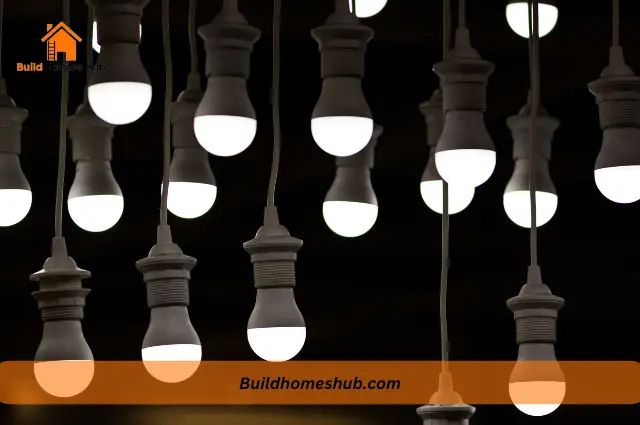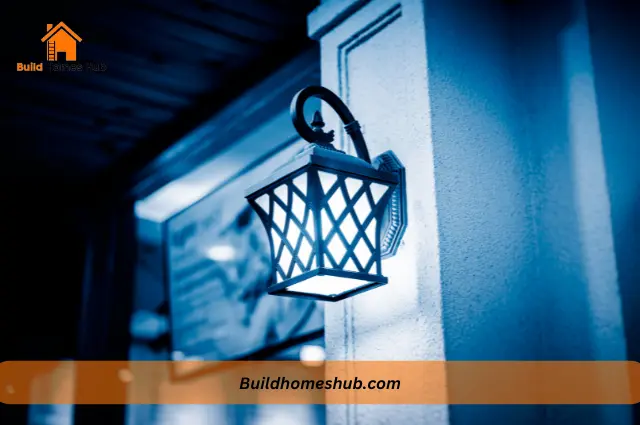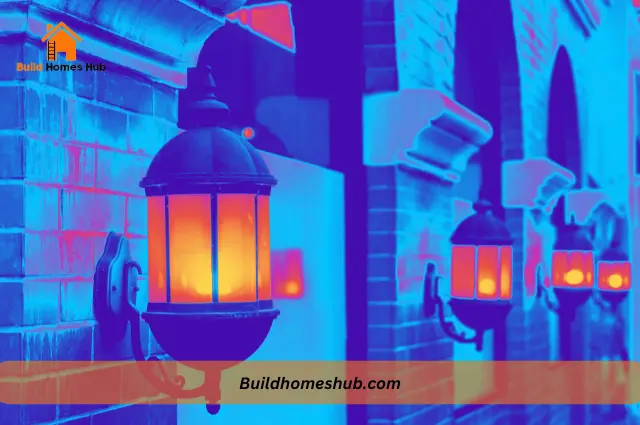Ceiling lights are an essential component of any well-designed and functional space. When it comes to installing these lights, one common question arises: Do ceiling lights need a junction box? A junction box is a crucial electrical housing that provides a safe and secure connection for electrical wiring.
In this post, we will explore the importance of junction boxes in ceiling light installations, the potential risks of not using one, and the benefits they offer in terms of safety and convenience.
Do Ceiling Lights Need a Junction Box?
Yes, ceiling lights generally require a junction box for safe and proper installation. Junction boxes provide a secure enclosure for electrical connections, ensuring safety by preventing accidental contact and reducing the risk of electrical hazards. They also facilitate easier maintenance and troubleshooting, making them an essential component in ceiling light installations.
Why Ceiling Lights Need a Junction Box
1. Safety
One of the primary purposes of a junction box is to ensure electrical safety. Junction boxes provide a secure housing for electrical connections, preventing accidental contact with live wires. They contain and protect the wiring from potential damage, such as being exposed to moisture or physical impact. By enclosing the connections within a junction box, the risk of electrical hazards like short circuits, fires, or electrocution is significantly reduced.
2. Compliance with Electrical Codes
In many jurisdictions, electrical codes and regulations require the use of junction boxes for all electrical connections. These codes are in place to ensure safe and standardized electrical installations. By using a junction box, you adhere to these regulations, avoiding potential legal issues and ensuring that your installation meets the necessary standards.
3. Structural Integrity
Junction boxes also contribute to the structural integrity of the ceiling. They provide a stable anchor point for the light fixture, helping distribute its weight evenly and preventing any strain on the electrical connections. Without a junction box, the weight of the light fixture could potentially pull on the wiring, causing damage to both the fixture and the ceiling.
4. Access for Maintenance and Troubleshooting
Another benefit of junction boxes is that they provide easy access for maintenance and troubleshooting. If there is a need to inspect or repair the electrical connections, having a junction box allows electricians or homeowners to do so without causing damage to the surrounding structure. The junction box acts as a convenient access point for making adjustments, replacing components, or troubleshooting any issues that may arise.
5. Versatility
Junction boxes offer flexibility when it comes to wiring configurations. They allow for multiple wires to be connected safely in a single location, making it easier to manage and organize the electrical connections. This versatility is particularly useful when installing ceiling lights in rooms with multiple fixtures or when additional electrical devices, such as switches or outlets, are involved.
What Happens if You Don’t Use a Junction Box?
1. Safety Hazards
The absence of a junction box significantly increases the risk of electrical hazards. Without secure housing for the electrical connections, there is a greater chance of accidental contact with live wires. This can lead to electric shocks, burns, or even electrocution. The exposed wiring is also more susceptible to damage, such as fraying or exposure to moisture, which further enhances the risk of electrical faults and potential fires.
2. Fire Hazards
Without a junction box, the electrical connections are exposed and vulnerable. If the wiring is not adequately protected, it can come into contact with flammable materials, causing a short circuit or an electrical arc. This can lead to sparks or overheating, potentially igniting nearby combustible materials and starting a fire. Also, the absence of a junction box prevents the containment of any sparks or heat generated during normal electrical operation, increasing the fire risk.
3. Structural Damage
The absence of a junction box can cause structural damage to the ceiling itself. Without a secure anchor point for the light fixture, the weight of the fixture can strain the electrical connections, potentially leading to wires coming loose or breaking. This can result in malfunctioning lights or even a complete failure of the lighting system.
4. Code Compliance Issues
Electrical codes and regulations, which vary by jurisdiction, typically mandate the use of junction boxes in electrical installations. By not using a junction box, you are in violation of these codes, which can result in legal consequences and difficulties with property inspections or insurance claims.
Non-compliance may also impact the sale or resale value of a property, as potential buyers and inspectors look for safe and properly installed electrical systems.
5. Difficulties in Maintenance and Troubleshooting
Not having a junction box makes it challenging to perform maintenance and troubleshooting tasks. Without a centralized access point, it becomes more difficult to inspect or repair the electrical connections. Electricians may need to disassemble parts of the ceiling or wall to reach the wiring, leading to additional time, effort, and potential damage to the surrounding structure.
6. Limited Flexibility
The absence of a junction box restricts the flexibility of the electrical system. A junction box provides a convenient location for connecting multiple wires and devices, allowing for easy customization and adjustments. Without this, the installation becomes more cumbersome, making it harder to add or modify electrical connections in the future.
Is it OK to Put The Junction Box on Ceiling?
Yes, it is generally acceptable and common practice to install the junction box in the ceiling when it comes to ceiling lights. Wiring a junction box for lighting in the ceiling provides a centralized location for electrical connections, allowing for a neat and organized installation.
Reasons why it is considered appropriate to put the junction box in the ceiling:
1. Accessibility
By locating the junction box in the ceiling, it remains easily accessible for maintenance and troubleshooting purposes. Electricians or homeowners can access the box without the need to dismantle walls or other parts of the structure. This accessibility facilitates any future adjustments, repairs, or upgrades that may be required.
2. Aesthetic Considerations
Placing the junction box in the ceiling helps to maintain a clean and aesthetically pleasing appearance. The electrical connections are concealed within the ceiling, minimizing the visibility of wires and enhancing the overall visual appeal of the space. This is especially important for ceiling lights, as they are often a prominent feature in the room.
3. Space Efficiency
Installing the junction box in the ceiling maximizes the efficient use of space. Since the ceiling is typically an underutilized area, placing the box there avoids taking up valuable wall space or floor area. This can be particularly beneficial in rooms with limited space or when multiple ceiling lights need to be installed.
4. Wiring Organization
Having the junction box in the ceiling allows for better organization and management of the electrical wiring. Wires can be neatly routed to the box, minimizing the risk of tangles or accidental damage. This organized arrangement simplifies maintenance and troubleshooting, as individual wires and connections can be easily identified and accessed.
5. Safety and Compliance
Properly installed junction boxes in the ceiling ensure compliance with electrical codes and safety standards. By housing the electrical connections within a secure enclosure, the risk of accidental contact or damage to the wiring is minimized. This compliance helps protect against electrical hazards and ensures the installation meets the necessary regulatory requirements.
Best Ceiling Light Junction Box
1. QILIPSU Waterproof Outdoor Junction Box
The QILIPSU Waterproof Outdoor Junction Box is a durable and reliable option for outdoor electrical projects. With an IP67 rating, it offers excellent protection against water, dust, and other environmental elements. The ABS plastic construction ensures durability and resistance to impact, making it suitable for various outdoor applications.
The hinged grey cover allows for easy access to the interior, while the included mounting plate and wall brackets offer convenient installation options. With dimensions of 11.2″x7.7″x5.1″, it provides ample space for electrical connections.
2. Gratury Junction Box
The Gratury Junction Box is an IP67 waterproof plastic enclosure designed for electrical projects. With a hinged grey cover and dimensions of 290×190×140mm, it offers sufficient space for wiring and components. The included mounting plate and wall bracket facilitate easy installation and ensure stability.
The waterproof construction protects against water and dust ingress, making it suitable for indoor and outdoor applications. The durable plastic material provides resistance to impact and ensures long-lasting performance.
3. QILIPSU Hinged Cover Stainless Steel Latch Junction Box
The QILIPSU Hinged Cover Stainless Steel Latch Junction Box is a robust option for electrical projects that require a larger enclosure. Its dimensions of 370x270x150mm provide ample space for accommodating multiple electrical connections and components.
The IP67 waterproof and dustproof rating ensures protection against environmental elements, making it suitable for a wide range of applications. The hinged cover with a stainless steel latch allows for easy access and secure closure. The included mounting plate adds convenience during installation.
Conclusion
In conclusion, junction boxes are a vital element in the installation of ceiling lights, ensuring safety, compliance with electrical codes, and ease of maintenance. They serve as protective enclosures that house electrical connections, preventing accidental contact and reducing the risk of electrical hazards such as short circuits, fires, or electrocution.
Also, junction boxes provide a convenient access point for maintenance and troubleshooting, allowing electricians to make adjustments or repairs without causing damage to the surrounding structure.
I hope to help you make the right choices with my content. I am passionate about building new homes and renovations. Follow me, on my socials, I drop nice stuff that may be helpful.

